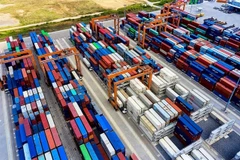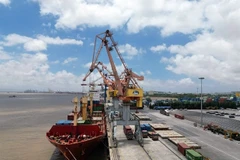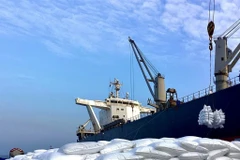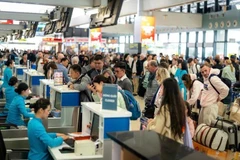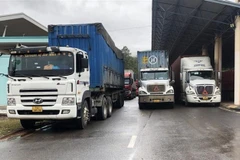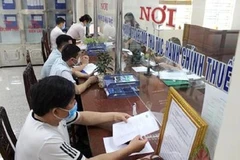Hai Phong (VNA) – Deputy Minister ofTransport Nguyen Nhat has emphasised the need to give priority to developing keyseaports and seaport clusters in the next ten years.
Speaking at a seminar on the master plan for Vietnam’s seaport system developmentin the 2021-2030, with a vision to 2050 held by the ministry’s Vietnam MaritimeAdministration (VMA) on December 30, Deputy Minister Nhat highlighted the considerabledevelopment in both quality and quality of the national seaport system inrecent years, saying this basically meets the development goals set in theapproved plan.
The seaport system has contributed to creating a momentum for the developmentof coastal economic, industrial and urban zones, ensuring import-exportactivities and transport of commodities through seaports, thus meeting requirementson socio-economic development and international economic integration, he said.
In the 2000s, the total output of goods through seaports nationwide stood atabout 82 million tonnes. The figure rose to 654 million tonnes in 2019 and isexpected to reach 670 million tonnes in 2020.
Nhat said that developing marine infrastructure is also needed to promote the nationalsocio-economic development, and meet the increasing demand of import-export,multinational transport activities.
Under the master plan, the volume of cargo handled through ports will be 1.14 –1.42 billion tonnes a year by 2030. Ports nationwide are set to serve 10.1 –10.3 million passengers per year. By 2050, the volume of cargo is expected to increaseto 2.8 – 3.3 tonnes, and the number of passengers to 14.4 to 15.1 million passengersper year.
According to statistics of the VMA, as of 2019, Vietnam had 588 harbours, fourtimes higher than in 2000. The total volume of cargo handled through portsreached 664.6 million tonnes, eight times higher than in 2000.
The total cost for Vietnam's seaport infrastructure development to 2030 isestimated at about 150 trillion VND (6.5 billion USD) to 200 trillion VND (nearly8.7 bilion USD) (excluding investment for specialised ports and wharves).
Vietnam’s seaport development remains on track, with several deep-waterseaports in operation in the northern and southern regions and others expectedto be built in the central region.
Prime Minister Nguyen Xuan Phuc recently issued a directive requesting theimplementation of measures for effectively connecting transport infrastructureand lowering logistic costs, which now account for an average of 21 percent ofa product’s price.
Logistics now account for 3 to 4 percent of GDP and post a rapid growth rate of15 to 20 percent each year. The sector is expected to contribute 8 to 10percent of GDP by 2025 thanks to lessons learned from logistics practices indeveloped countries./.









